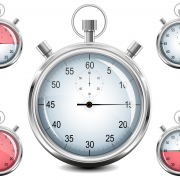Distance covered & competition result
Conditional performance in competition.
Last week we were surprised by news that shakes us every season and creates a kind of alarm and analysis among professionals and fans of competitive football. Manchester United were losing their second Premier League match and headlines were also emerging that the entire team had run 14km less than rivals Brentford, who also won the match by a convincing 4-0 scoreline. Now after winning a classic match against Livepool FC, all the headlines are that the team was able to run 19km further than in the Brentford match.

The distance covered in competition is one of the most frequent variables in post-match analysis and can show values between 90 and 120 km for all the players participating in the match for each team. It is usually a conditional metric that is shown in live broadcasts or at the end of matches by the different media that cover the most important national and international competitions. From it, conclusions are drawn, sometimes more professional than others, about the team conditional performance.
I don’t usually do it, but last week I dared to take a survey on my personal twitter to really see the opinion of many of my colleagues about their preferences regarding some simple options that reflected different conditional performances and results in competition.

As expected, most of us prioritize the result of the competition (89.2% win over draw or lose) even though the team covers less distance than its rival. Obviously, as physical trainers and/or assistant coaches we like our team to run and perform above the rival, but of course the most important thing is the result of the match, and this is related to the number of goals and not the number of meters covered.
But is there a direct relationship between these two variables? Could we venture to say that when a team travels more distance than its rival, it has a better chance of winning a match?
In one of the articles that preceded my doctoral thesis (Gómez-Díaz et al., 2013), we tried to analyze two Premier League and Championship teams and compare how their performance was depending on whether the team won, tied or lost the game. At both the first and second division levels of English football, we found that the total distance covered during competition was significantly higher (p < .05) for both teams when they were winning matches. In addition, not only the total distance seemed to have a relevance in the result in the competition, but also the distance in high intensity had a very positive influence on the final results.
However, after that publication and following other reference colleagues such as Paul Bradley, Pedro Gómez, David Casamichana, Julen Castellano… among others, and their publications, we have seen a multitude of results and investigations, with the general conclusion these years that really there is not a direct or conclusive relationship between conditional performance in teams with the parameters of success in competition. And if we go a little further, in the recent publication by Ponce-Bordón et al. (2022) where 4 seasons of the Spanish league and all its matches are analyzed, they find that although in the first phase of the season, the teams with the best results also have a better conditional performance, and also that at the end of the season the teams with the highest success, are those that dose and maintain a lower conditional performance, possibly due to a better interaction and connection between their players and optimization of their technical and tactical aspects.
In addition to all these investigations and studies, we must recognize that the total distance covered is an aspect linked to conditional performance with a multivariable nature. Numerous aspects depend, such as the fact of playing at home or away, the playing formation used, partial result of the match, classification in the competition, level of quality of the rival… to name a few of them.
Finally, and as almost always happens in a sport as complex as football, we need a holistic view of all the parameters that influence the performance of the game, to know in some way, the association of the multiple variables that influence the result. To be more specific, the total distance covered by a team will be one of the thousands of variables that we can measure to know the conditional performance of our players, but never can we directly associate it with the final result of the competition. Within our contextual or situational variables, this metric will obviously have a greater or lesser relevance in performance, but we must be careful when making erroneous or quick conclusions about its direct effect on the game.
Greetings, let’s keep moving forward…
AG








Leave a Reply
Want to join the discussion?Feel free to contribute!